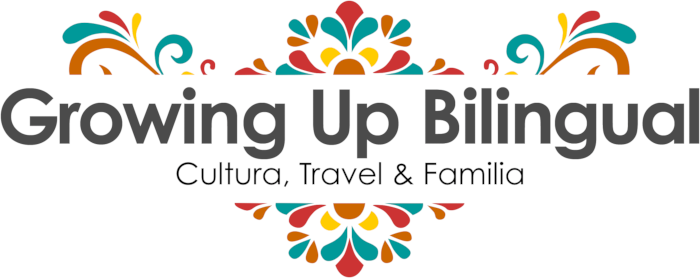This post is also available in: Español
Guatemalan candy, also known as “dulces típicos,” are not just delicious and unique, Guatemalan sweets are also a important part of Guatemalan culture and it’s culinary traditions. If you’re looking amazing Guatemalan desserts, Guatemalan candy are a great option and there are so many varieties you’re sure to find a few favorites!

In this article I share the history and craftsmanship behind traditional Guatemalan candy as well as the most popular Guatemalan sweets. I also share where you can find the best dulces típicos (traditional candy) in Guatemala and I even included links to some Guatemalan candy recipes so you can make some of them at home!
Dulces Típicos: Traditional Guatemalan Candy
Traditional Guatemalan candies are not just ordinary sweets; they are made from Guatemalan recipes that have been passed down through generations. And if you’re going to try one Guatemalan food, it needs to be Guatemalan candy. The only problem is that it will be impossible to choose just one.

Each piece of candy is made with care and tradition, using ingredients such as fruits, milk, and many other ingredients to create delightful sweets like “cocadas” “frutas de mazapán,” “naranjitas,” and “maletas de higos.” These traditional candies not only offer a sweet taste of traditional Guatemala food but also reflect the country’s history, from the Mayan civilizations to Spanish colonial influences, making “dulces típicos” a an important part of Guatemalan culture.
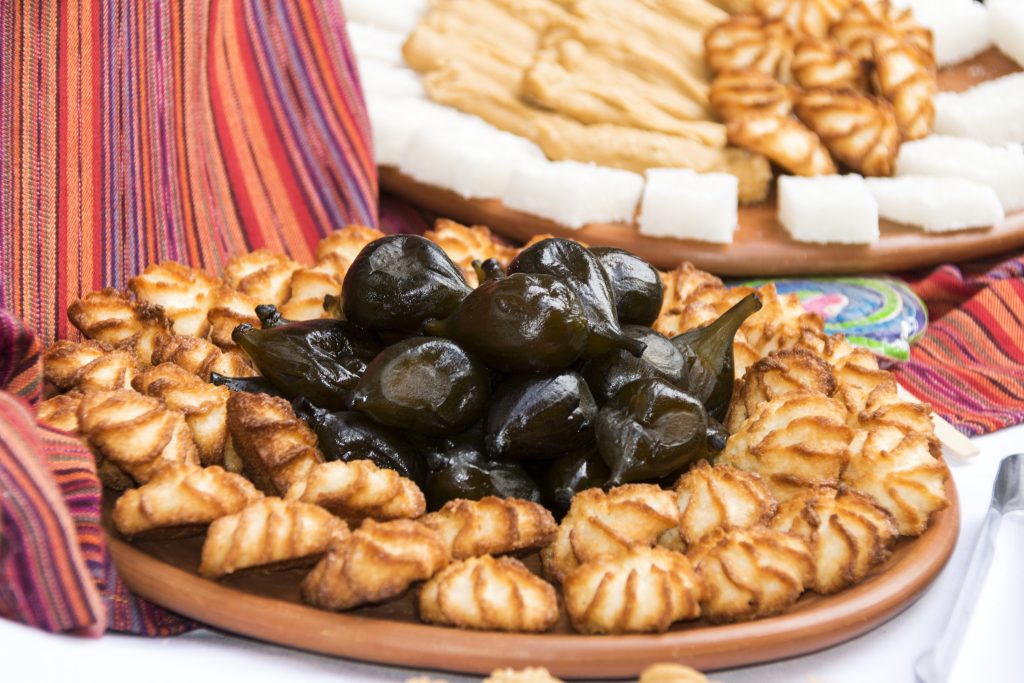
For me dulces típicos are one of those things that transport me back to happy childhood memories. I remember the excitement and anticipation of visiting Doña Maria Gordillo’s candy shop in Antigua Guatemala, standing in line waiting for our turn to order and looking through the glass at the infinite varieties of candy and trying to decide which ones to choose. I remember biting into the canillitas de leche and having them melt in my mouth or popping a bolita de tamarindo in my mouth and the combination of sweet tanginess filling my mouth with a burst of flavor.
The History of Traditional Guatemalan Sweets
Guatemalan traditional candies, also known as “dulces típicos,” have been around for centuries and have an interesting history. After the Spanish arrived in Guatemala in the 1500s, candy-making became a popular craft. The Confectionary Guild was even mentioned in a document dating back to 1613.
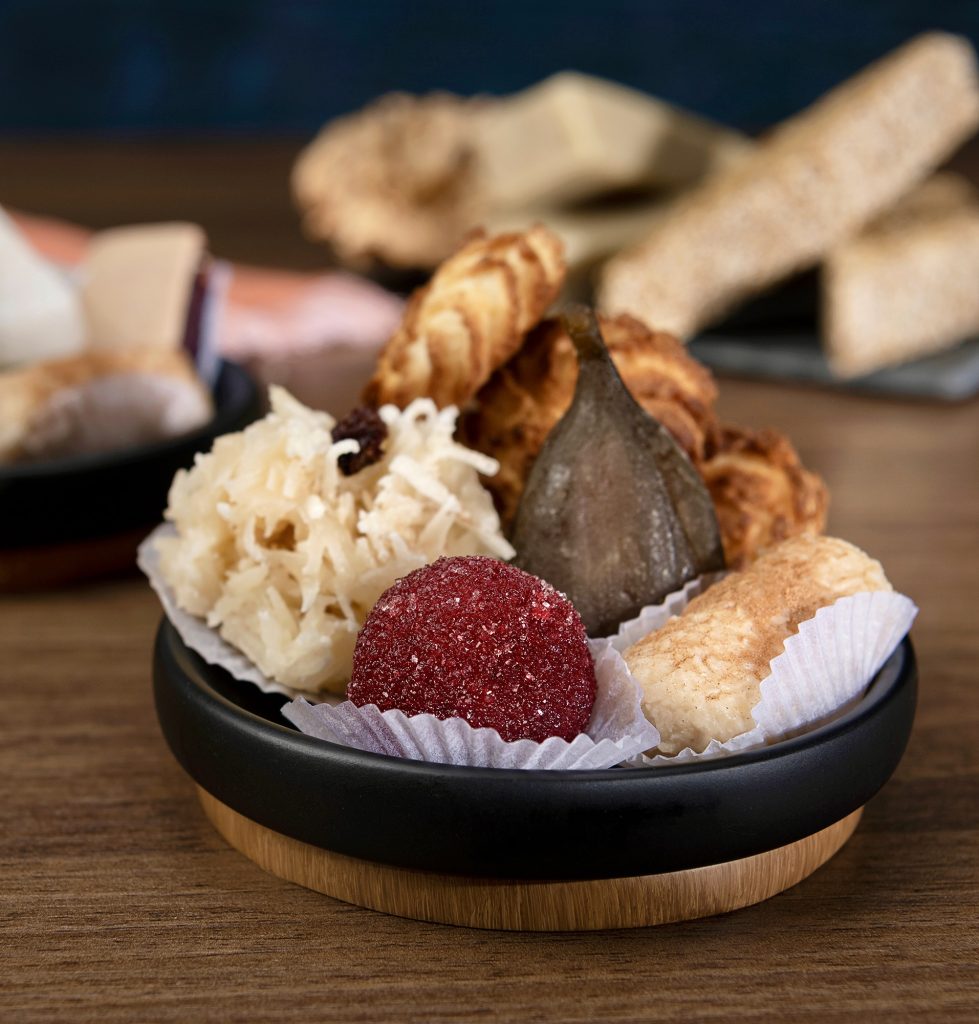
The history of Guatemalan candy is connected to the history of sugar. Sugar has been around for over 5,000 years and was first used in the Polynesian Islands. It eventually found its way to India, then Ancient Greece and Rome, and was later cultivated in Spain and Portugal. In the 1550s, sugar cane was brought to Guatemala and became a staple in Guatemalan candy-making.
Many candy-making techniques and sweets from Spain and Arabic cultures were introduced to the Spanish colonies, including Guatemala. However, many popular Guatemalan sweets are unique and a blend of pre-Hispanic and European cultures. These candies represent an important part of Guatemala’s national cuisine and combine Spanish sugary treats with local fruits to create truly delicious products. The introduction of coffee to Guatemala in the 1870s added even more variety to the candy assortment, with coffee-flavored sweets becoming popular.
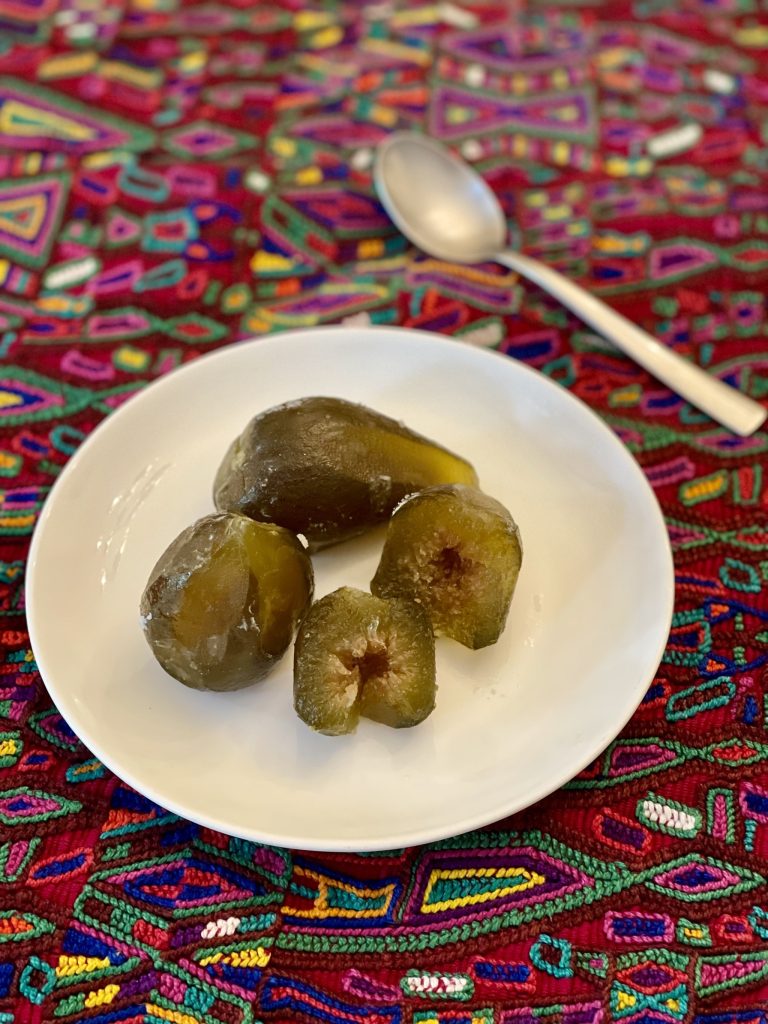
Many of the traditional Guatemalan candies we know today use ingredients brought by the Spanish, like cane sugar, with local fruits and native cooking methods. One of these methods, called nixtamalization, is used to create sweets like chilacayote and candied figs. Nixtamalization is a cooking technique that was commonly used by the Mayan and other Mesoamerican cultures to treat corn with an alkaline solution. When nixtamalization is used on fruits, it preserves them and makes them sweeter and more nutritious. Originally used to keep fruits fresh year-round, the introduction of cane sugar by the Spanish led to these nixtamalized fruits being cooked again with sugar, resulting in the glossy, crunchy-on-the-outside, soft-on-the-inside crystallized candies enjoyed today.
Guatemalan Towns Famous for Their Sweets
La Antigua Guatemala, formerly known as Santiago de Guatemala, has become a hub for Guatemalan sweets. It’s not surprising given its rich history. This sweet-making tradition has spread to other places like Guatemala City (Nueva Guatemala de la Asunción), Quetzaltenango, Cobán, Esquipulas, Amatitlán, and even the sweet-making “factories” of San Martín Jilotepeque. These areas are well-known for their popular candies.
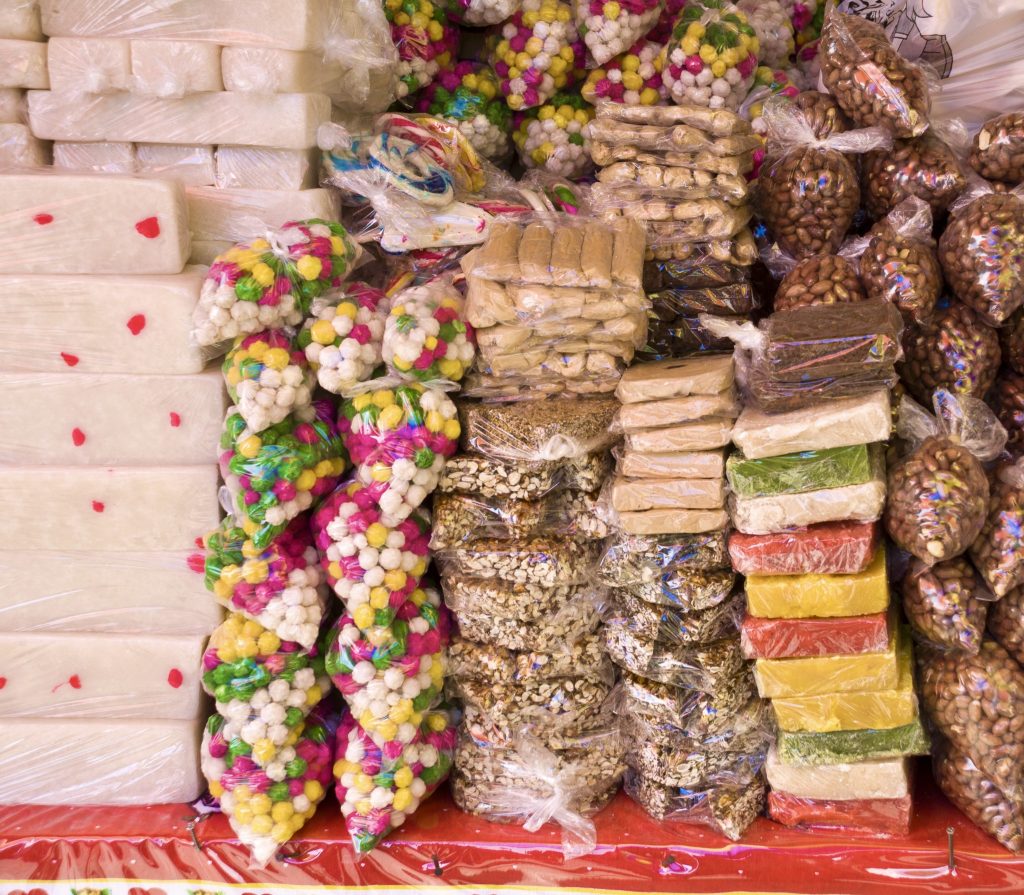
Different towns in Guatemala are famous for their unique and delicious traditional candies. For example, Amatitlán is famous for its traditional sweets like pepitoria, marzipan, chancaca, matagusano, and colación. Meanwhile, Cobán is known for its delectable café con leche sweets, and Antigua Guatemala has some delicious floury treats like nuégados and tartaritas. If you’re looking for espumillas, Quetzaltenango is the place to be! Despite their differences, sweet traditions have continued to thrive all over the country.
The Diversity of Guatemalan Candy
Traditional Guatemalan candies are a delightful blend of flavors, some with roots in Arabic and Spanish traditions and some incorporating native fruits and prehispanic cooking techniques. Over 224 candy recipes are listed in a manuscript from 1844, showing these confections’ deep historical roots and continued popularity, with more than 90 types still enjoyed today.

Here is a list of some of the most popular Guatemalan “dulces típicos” or traditional candy varieties:
Barras (Seed Bars)
Crunchy bars made with caramelized sugar and different types of seeds.
- Barra de pepitoria: A traditional candy bar made from pepitas or squash seeds mixed with caramelized sugar.
- Barra de ajonjoli: Sesame seed bars bound together with caramelized sugar for a sweet and crunchy treat.
- Barra de manía: Peanut bars made by mixing roasted peanuts with caramelized sugar, offering a nutty and sweet flavor.
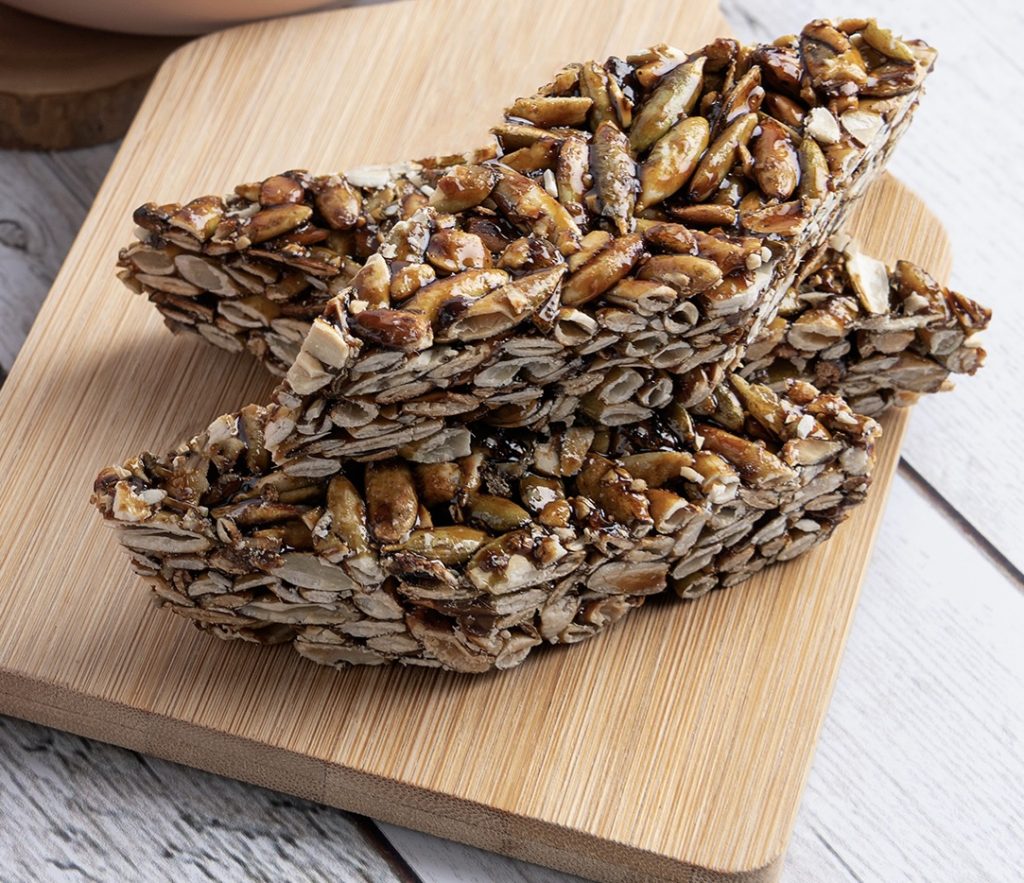
Bolitas
Fruit pulp is mixed with sugar and then formed into balls that are them rolled over sugar to make the different flavored bolitas or balls.
- Bolitas de tamarindo: Sour tamarind pulp mixed with sugar and rolled into balls, then coated in sugar for a balance of sweet and tart.
- Bolitas de naranja o Naranjitas: Orange-flavored balls made from concentrated orange pulp and sugar, rolled in sugar crystals.
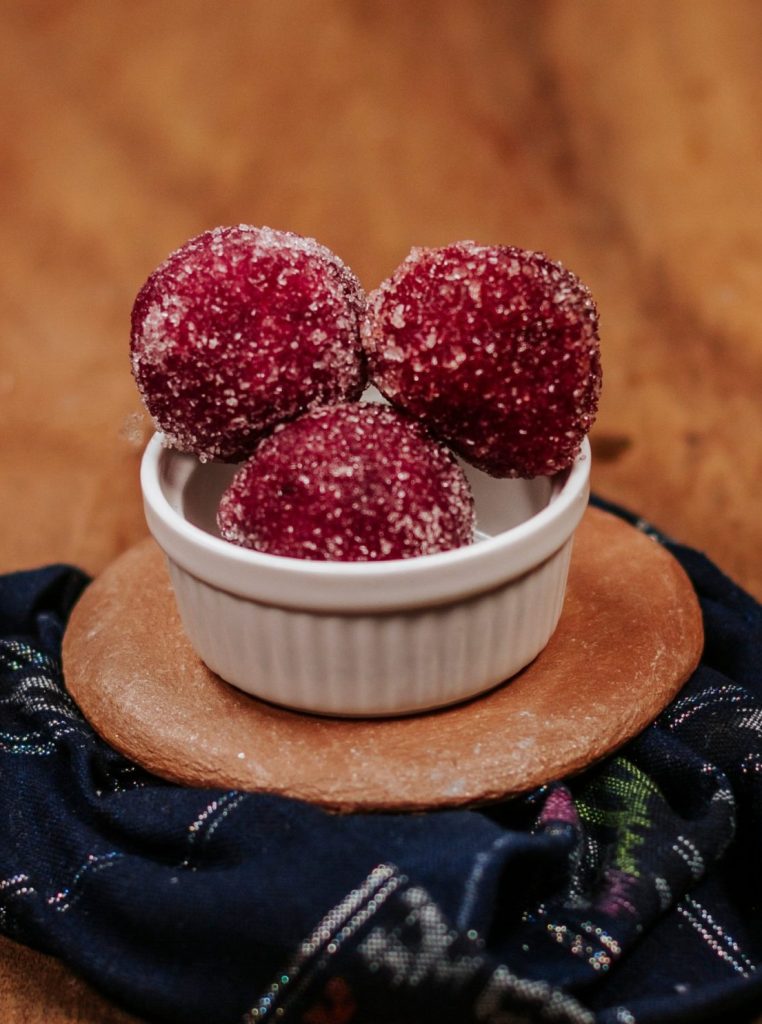
Coconut Candy
- Conserva de coco: A sweet, chewy coconut bar, showcasing the natural flavor of coconut.
- Cocadas: Cocadas are deliciously chewy coconut cookies. Get the recipe for Guatemalan cocadas here.
- Cocadas reales: Coconut candy, often made with condensed milk for a creamy texture and sweet coconut flavor. You can get the recipe for cocadas reales here.
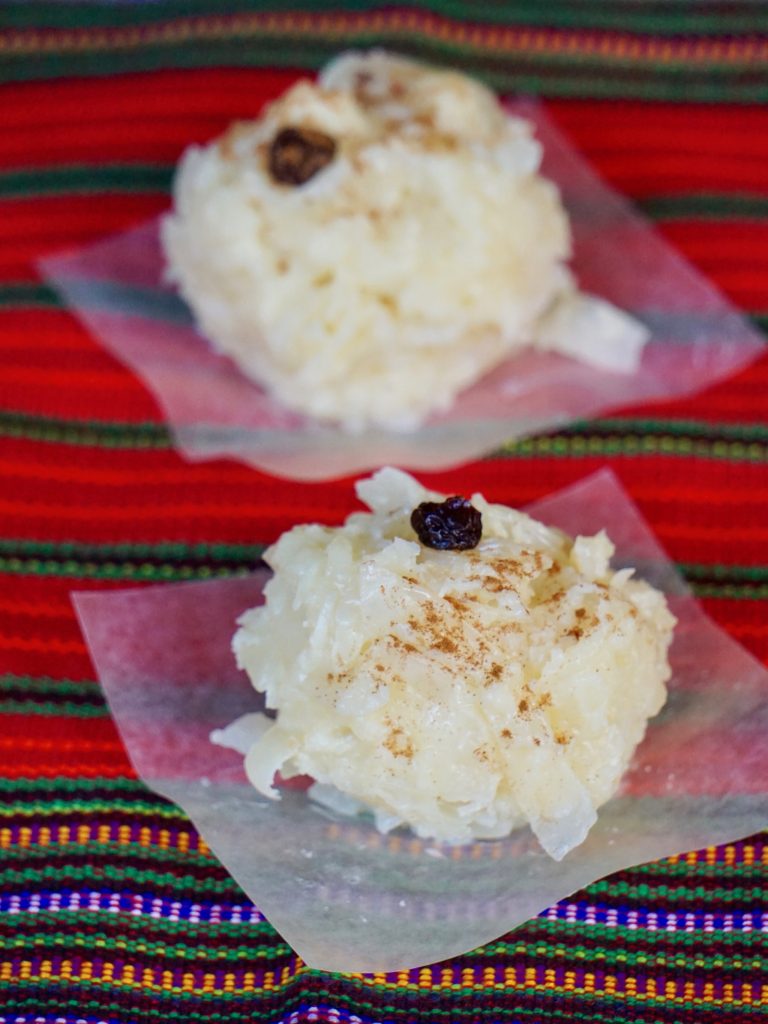
Colochos de frutas
To make “colochos”, fruit jelly is cooked until it can be molded. The cooked mixture is then placed on a board and cut into long strips. Sugar is added to the board, and the strips are rolled up into themselves with more sugar. This creates the final “colochos” or curls.
- Colochos de Guayaba: Guava-flavored soft sweet twisted into a curly shape and covered in sugar crystals. You can get the recipe for Colochos de Guayaba here.
- Colochos de fresa: strawberry-flavored soft sweet twisted into a curly shape and covered in sugar crystals.
- Colochos de mango: mango-flavored soft sweet twisted into a curly shape and covered in sugar crystals.
- Colochos de mora: blackberry-flavored soft sweet twisted into a curly shape and covered in sugar crystals.
- Colochos de piña: pineapple-flavored soft sweet twisted into a curly shape and covered in sugar crystals.

Candied fruit
- Camote en dulce (candied): Sweet potatoes candied and often spiced with cinnamon for extra flavor.
- Chilacayote: Candied chilacayote squash, crystalized on the outside and soft on the inside. Get the recipe for Chilacayote candy here.

- Higos (maleta de higos): Candied figs packed in sugar and usually served in (mallets) groups of four or five. Make them at home: get the recipe for higos en maleta.
- Higos rellenos de coco: candied figs stuffed with sweetened coconut filling, combining the chewiness of figs with the tropical taste of coconut.
- Higos rellenos de mazapan: candied figs filled with marzipan, offering a blend of sweet almond flavor with the natural sweetness of figs.
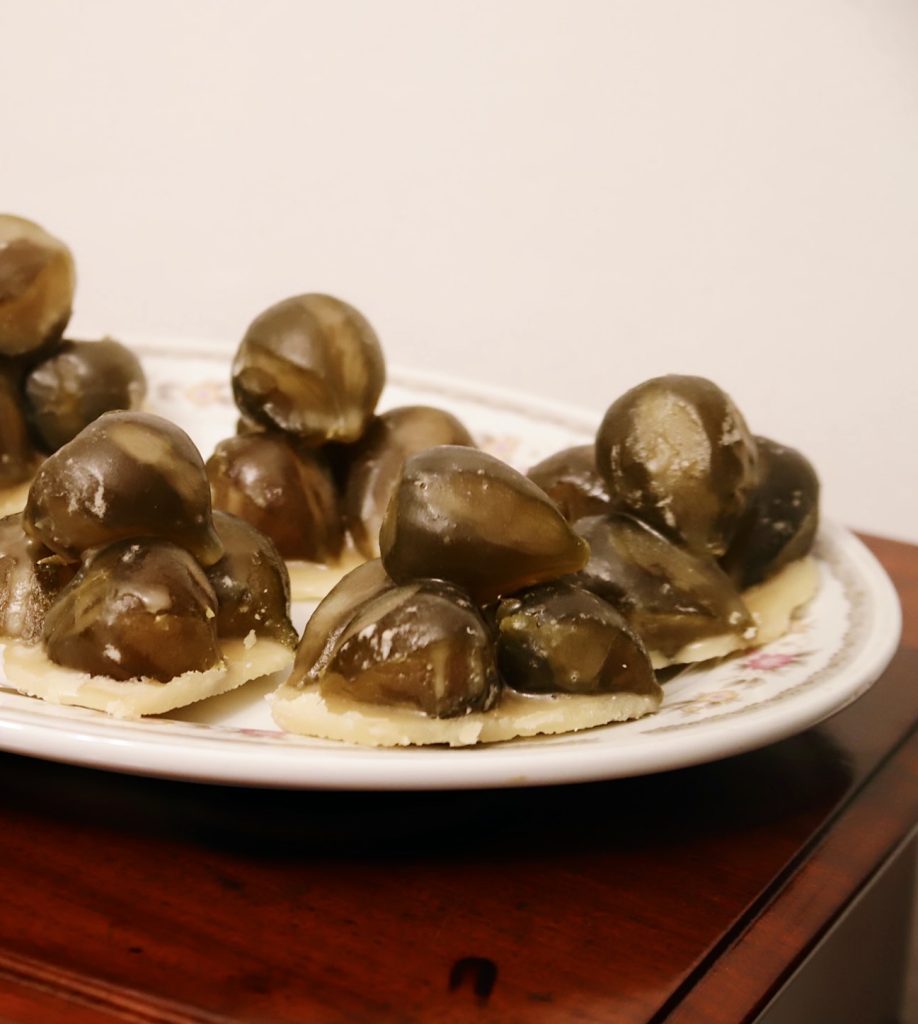
Naranjas
- Naranja en miel: Candied oranges preserved in a sweet syrupe, offering a sweet and citrusy treat. Get there recipe for Guatemalan naranjas en miel here.
- Naranja con mazapan: Candied oranges filled with marzipan, combining citrus flavors with the sweet, almond taste of marzipan.
- Naranja rellena de coco: Candied oranges stuffed with sweet coconut filling, blending citrus and tropical flavors.
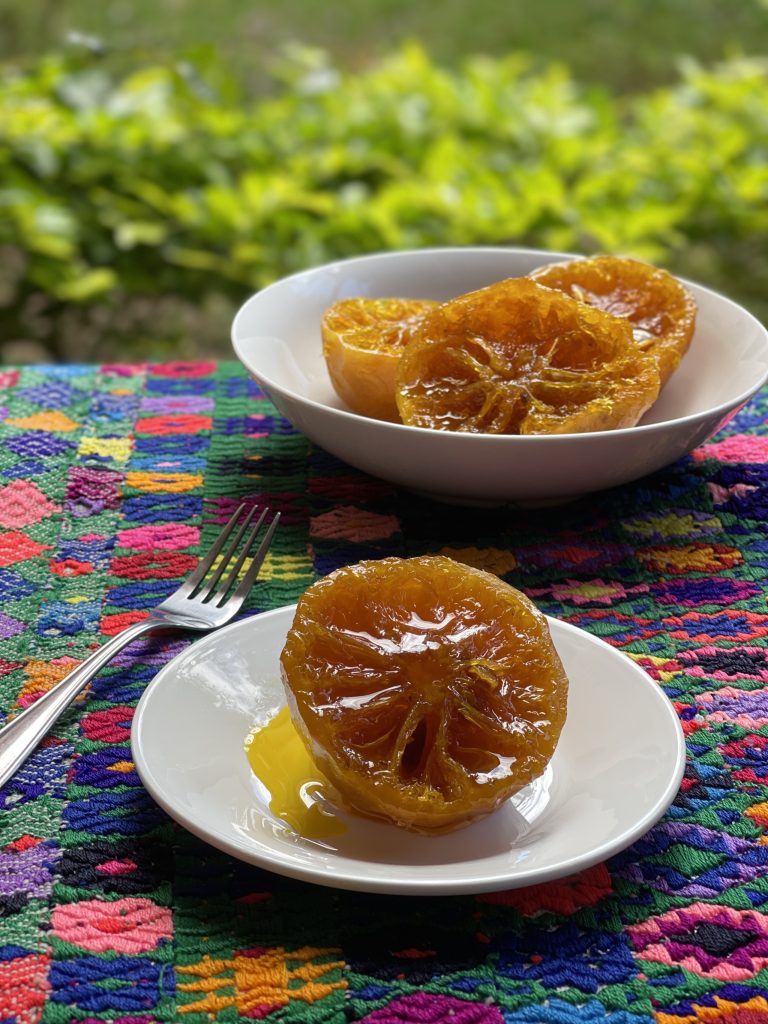
Tartaritas
- Tartaritas de almendra: Small tartlets with an almond filling, offering a nutty and sweet flavor.
- Tartaritas de piña y coco: Pineapple and coconut tartlets, combining tropical flavors in a bite-sized pastry.
- Tartaritas de leche: Milk-based tartlets, creamy and sweet, often topped with a sprinkle of cinnamon or coconut.
Marzipans
- Frutas de mazapan: Marzipan candies shaped and colored like fruits, offering a sweet almond paste flavor.
- Mazapan: Traditional marzipan candy, a sweet almond paste confection enjoyed for its soft texture and nutty flavor.
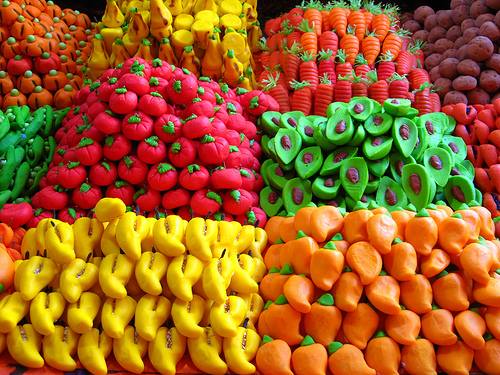
Milk based candy
- Bolitas de leche: Milk candy balls, creamy and sweet, often flavored with vanilla or cinnamon.
- Canillitas de leche: A milk-based candy shaped into small tubes, sweet and with a creamy texture. Make them at home: get the recipe for canillitas de leche, these treats are so easy to make they are ready in under 30 minutes!
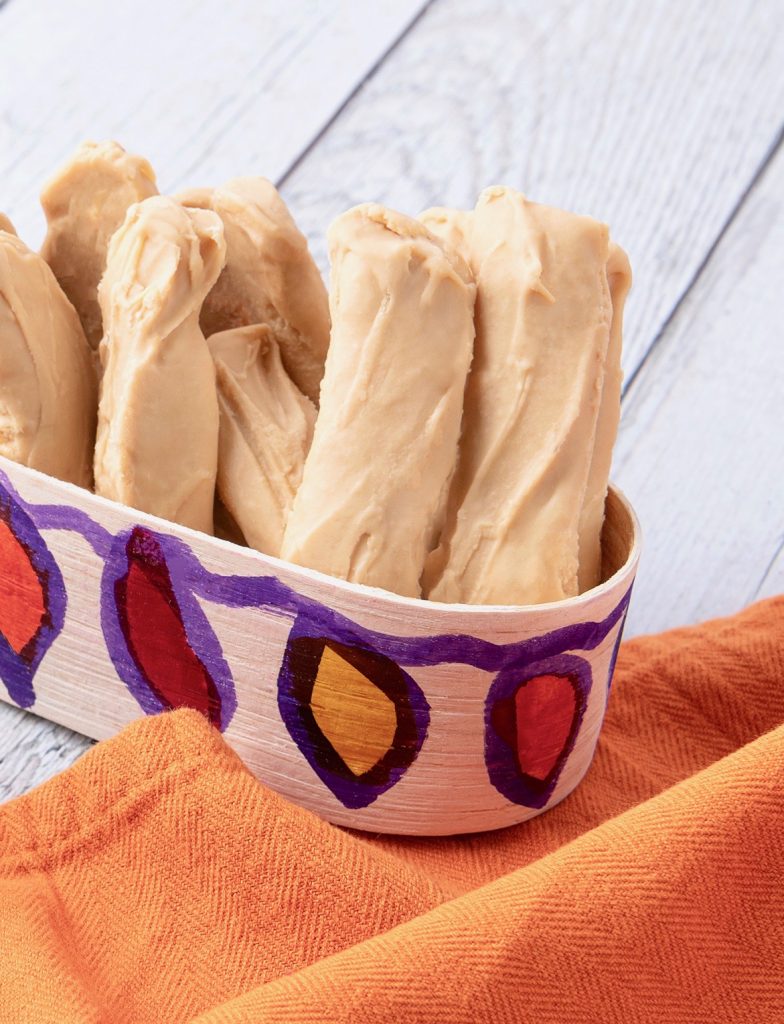
Other Candy
- Turron or turrones: soft and sweet, turrones are a type of meringue made of whipped egg whites and sugar; unlike some meringues, turron is not cooked and is soft and sticky.
- Zapotillos or Zapote con canela: Candied zapote fruit spiced with cinnamon, offering a unique and traditional flavor.
- Corbatas en miel: Literally “honey bow ties,” these are fried pastries soaked in honey, crispy and sweet.
- Huevo chimbo o chimbitos: A dessert made from eggs soaked in a sweet syrup, light and airy with a sweet coating.
- Nuegados: These are small balls of dough, fried and covered with a special sugar glaze; they are sold in small towers of 4 or 5 nuegados.

- Paciencias: Thin, crispy cookies, simple yet flavorful, perfect for dipping in coffee or tea.
- Quiebradientes: Literally meaning tooth breakers these hard candies are made of sugar with bits of peanuts and should not be chewed but sucked.
- Botellitas de miel: Small candies shaped like bottles and filled with honey, offering a sweet liquid center.
- Café con leche: Delicious candies made with pure cow’s milk and Guatemalan coffee, wrapped in waxed paper with a texture similar to toffee.
- Espumillas: Guatemalan baked meringue treats, light and crunchy on the outside and slightly chewy on the inside.
- Alborotos: popped sorghum (great millet) balls held together with a sweet syrup, a crunchy and sweet snack.
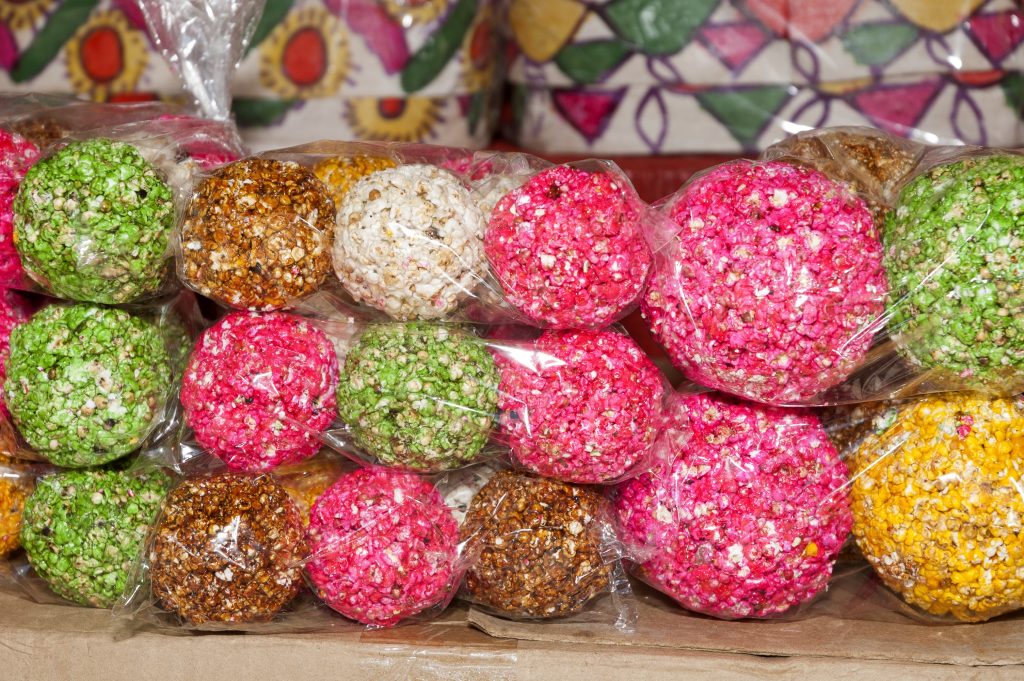
- Alfajores: Sandwich cookies filled with dulce de leche, coated in powdered sugar, offering a soft and sweet experience.
Where to Find Traditional Guatemalan Candy
If you visit La Antigua Guatemala, I highly recommend checking out some of the local candy stores. The best place for buying traditional Guatemalan candy is at Doña María Gordillo, 4a Calle Oriente #11. Her family has been recognized with the CNPAG Diego de Porres Gold Award for their unwavering commitment to preserving the age-old candy-making traditions of Guatemala. You won’t want to miss the impressive array of traditional sweets on offer, each made with the finest ingredients and crafted with exceptional skill. Just be aware that this is reflected in their prices.
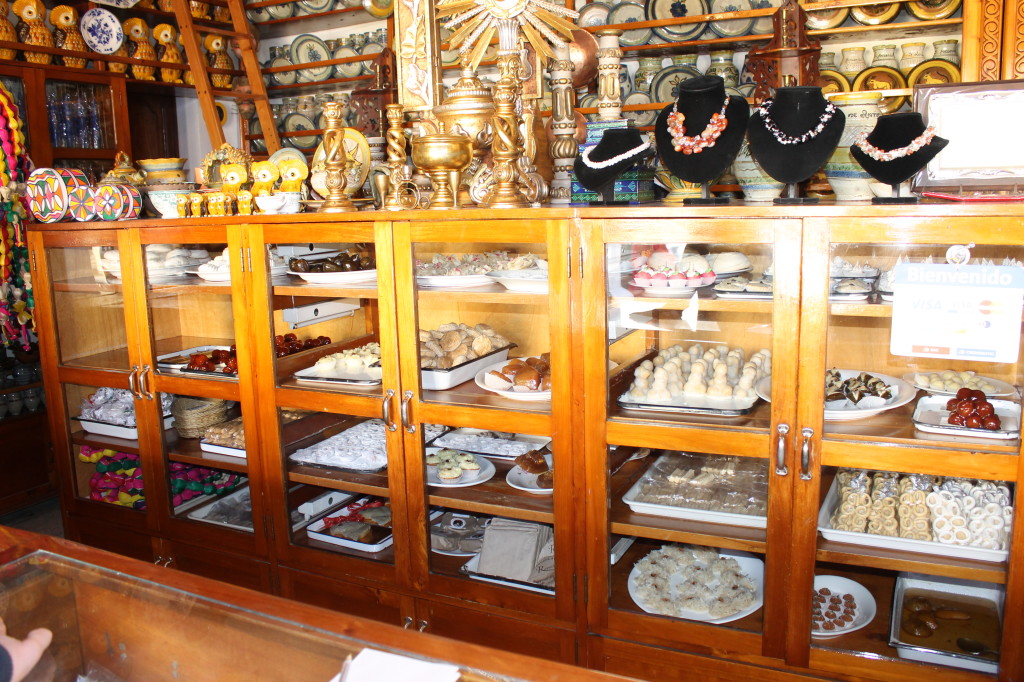
Other great candy stores in Antigua include La Casa at 7a Calle Oriente #20-A and El Sombrerón, at 4a calle poniente #11 and 4a calle oriente #24, which has huge variety of Guatemalan candy and their prices are more affordable.
